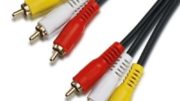Have you ever tried to watch TV in a moving car? It’s not so easy. At best you can get a minute or so of good reception and then you lose it again. If you’re using an inexpensive handheld TV, you know they can work fairly well so long as you’re sitting still. The moment you get up and move, you wish you hadn’t. You find yourself asking, why is it so hard? Why is it no problem to watch a youtube video (or read this article) while you’re going 65mph but just getting plain old television reception is hopeless?
(Just to clarify, you should never watch TV while you’re driving. Let someone else drive while you watch TV.)
In order to understand the difference you need to realize that while television is digital now, it’s still not the same as computer networking. Computer network data, like photos or this article, comes to you in chunks. In between each chunk is a message that you send back saying “Yes, I got that. Now send another.” That’s how computer data is designed. On the other hand television has always been a broadcast medium. That’s a one-way street. They send and you receive. They don’t stop to see if you got it… they just move on.
Why, then, does radio work in a car? It’s a “broadcast medium” too,right?
Right. But radio has a lot less to broadcast. A picture is worth a lot more than 1,000 words. In fact, the video part of a TV picture is about 100,000 times bigger than the audio part. That makes it roughly 100,000 times harder to get a good picture.

ENTER OMVC.
OMVC, the Open Mobile Video Coalition, exists for one reason. They want you to watch TV in a moving car. They have spent the last four years working on technologies to make that happen, and the great part is that they’ve made real progress. There’s a standard now for mobile digital television (MDTV) and it works. The US government approved their standard in August, 2009, calling it the A/153 Mobile DTV standard. That means that all mobile televisions made for the US market will work together… unlike the way cell phones or satellite radios work.
Mobile DTV allows a broadcaster to create a second channel just for mobile broadcasting. The broadcaster does all the work to make the signal easier for you to get in a moving car. It doesn’t take a second broadcast tower, although mobile repeaters can be used. The technology can be built into mobile phones, tablets, or standalone TVs. It can even be built into a GPS or in-dash entertainment system.
How do I know if I can get mobile broadcasts?
The best resource is mdtvsignalmap.com. You’ll find a list of markets that are already sending mobile DTV signals, today. The hardware is already coming from companies like Winegard and Tvizen.
Hold on a minute… you say… this all sounds like Flo TV. Didn’t they go out of business? That’s true. There was a product called Flo TV that offered a very similar service. The difference was that FloTV was limited to one manufacturer while Mobile DTV is an industry standard. That means that it should start showing up in smartphones, tablets, and other mobile devices, and the cost should be less.
Mobile DTV is just starting to take hold in this country but there is a proven demand for television while in a moving vehicle. The technology is getting less expensive and the broadcasting community has taken notice. It will just be a matter of time before SolidSignal can bring this technology to you!




